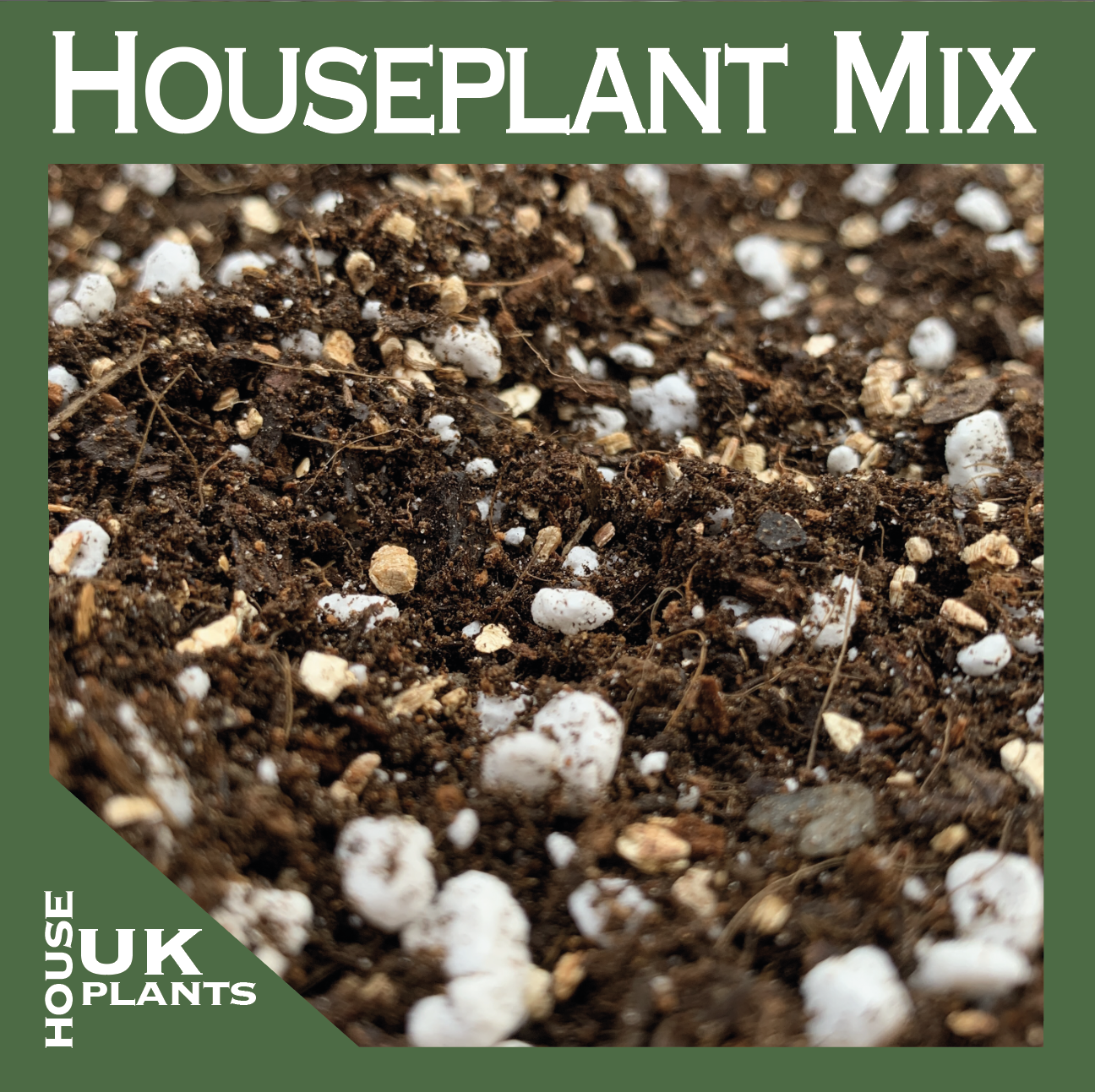Alocasia zebrina
Click Here to Learn about Repotting with Root Rot!
Contents
- Introduction
- When is the Right Time to Repot & Symptoms of an Under-Potted Plant
- A Step-By-Step Guide of Transplanting
- Symptoms of an Over-Potted Plant
- How to Avoid & Address Transplant Shock (A Must-Read)
- Choosing the Correct Potting Mix for Your Plant
Need the answer to a specific plant query? Book a 1-to-1 video call with Joe Bagley, the website's friendly author, to overcome and address your niggling problem! Available on iMessage, WhatsApp, Facebook Messenger & more.
We've also just opened our online store, so be sure to have a look around at our top-quality products like Fungus Gnat-free potting mixes, moss pole hooks & ready-made repotting kits!
1. Introduction
As a rule of thumb, most houseplants like to be transplanted every two or three years in the next sized pot. Although repotting is reasonably straight forward and requires little skill to do correctly, there are four rules to follow that ukhouseplants recommends.
- Transplant in early spring when the plant is about to enter the growing season.
- Correctly choosing the right sized-pot with adequate drainage holes.
- Use the appropriate potting mix. A soil-profile that is hydrophobic will cause dehydration and nutrient deficiency, whereas the opposite will promote anaerobic respiration (root rot).
- Treat the roots with respect. Despite many websites stating that you can liberally finger the roots to your desire, ukhouseplants would actively go against this. Damaging the fine root hairs will cause wilting, yellow or browned leaves and stunted growth within the first few weeks of a repot. This is what's known as Transplant Shock, so always treat your plant like a puppy!
2. When is the Right Time to Repot?
Most plants want to be repotted as they enter the growing season in the early spring. Although there are few exceptions (explanation in a moment), this is the ideal season as the roots will grow into the new soil much quicker than in the autumn or winter months. Transplanting during their dormancy period could entice root rot to develop, as there'll be an excess of moisture surrounding the root ball which won't be soaked up. When a soil is overly irrigated, the oxygen will be pushed to the surface, leaving an anaerobic environment. Roots need oxygen to respire for cell management, so surrounding them in too moist soil will cause suffocation and rot.
Symptoms of a Potbound Plant
- Roots that emerge from the drainage holes is the most common sign of a potential repot. Although this doesn't necessarily mean that a transplant is on the cards, it's a great way to check the number of roots without removing it from the pot.
- Watering a plant more often than others is another way to tell if the plant is struggling for space. When there is an overcrowding of roots, the soil's moisture will be fought-over and absorbed much quicker.
- Plants that show signs of stunted growth with brown or yellowed foliage.
- Specimens that bloom multiple times a year (for example Moth Orchids) is another symptom of being under-potted. Although a biannual transplant will help the plant's overall health, restricting its root growth is a great way to induce a show of blooms. Decide between improving the plant's growing conditions or enticing annual flowers by keeping it potbound.
- The final symptom is simple - take the plant out of its pot and investigate the roots; if you feel that they've become over-circulated, it's time for a transplant!
Peat-Free, Bio-Active Potting Mixes for Houseplants!
If you're one for saving time, money and stress, our hand-crafted soil mixes are just up your street. FREE Delivery to anywhere in the UK. If you'd like to learn more about our popular and most sold product, be sure to click on this link!
3. How to Perform a Successful Transplant
- Choose the correct potting mix with the right sized pot. To prevent a giant waffle over which soil to use, scroll to the article's bottom to have a look at which compost is right for your plant. Select a container that has drainage holes with its diameter being a few centimetres wider than the original to prevent the risk of over-potting. Bird of Paradise, Spider Plants and Monstera won't mind skipping a few pot sizes as their invasive root systems will soon fill the vacant soil.
- Water the plant 24hrs before the performance to reduce the risk of transplant shock. Have a quick moment to think about the precautions you'll make to avoid this issue, as most species won't tolerate being over-touched.
- Take the plant out of the pot and inspect the soil and root system - investigate for pests (most commonly Root Mealybugs) and diseases such as root rot. Any pests must be dealt with immediately before the transplant can continue - click on the respective links to learn more. A small amount of root rot can easily be contained by pruning off the affected areas and removing some of the original soil to improve the growing conditions. For those that show no signs of pest or diseases, move on to the next step.
- Fill the bottom quarter of the pot with the new soil. If possible, introduce a thin layer of grit to the base of the pot to increase drainage and the overall strength of the new root system.
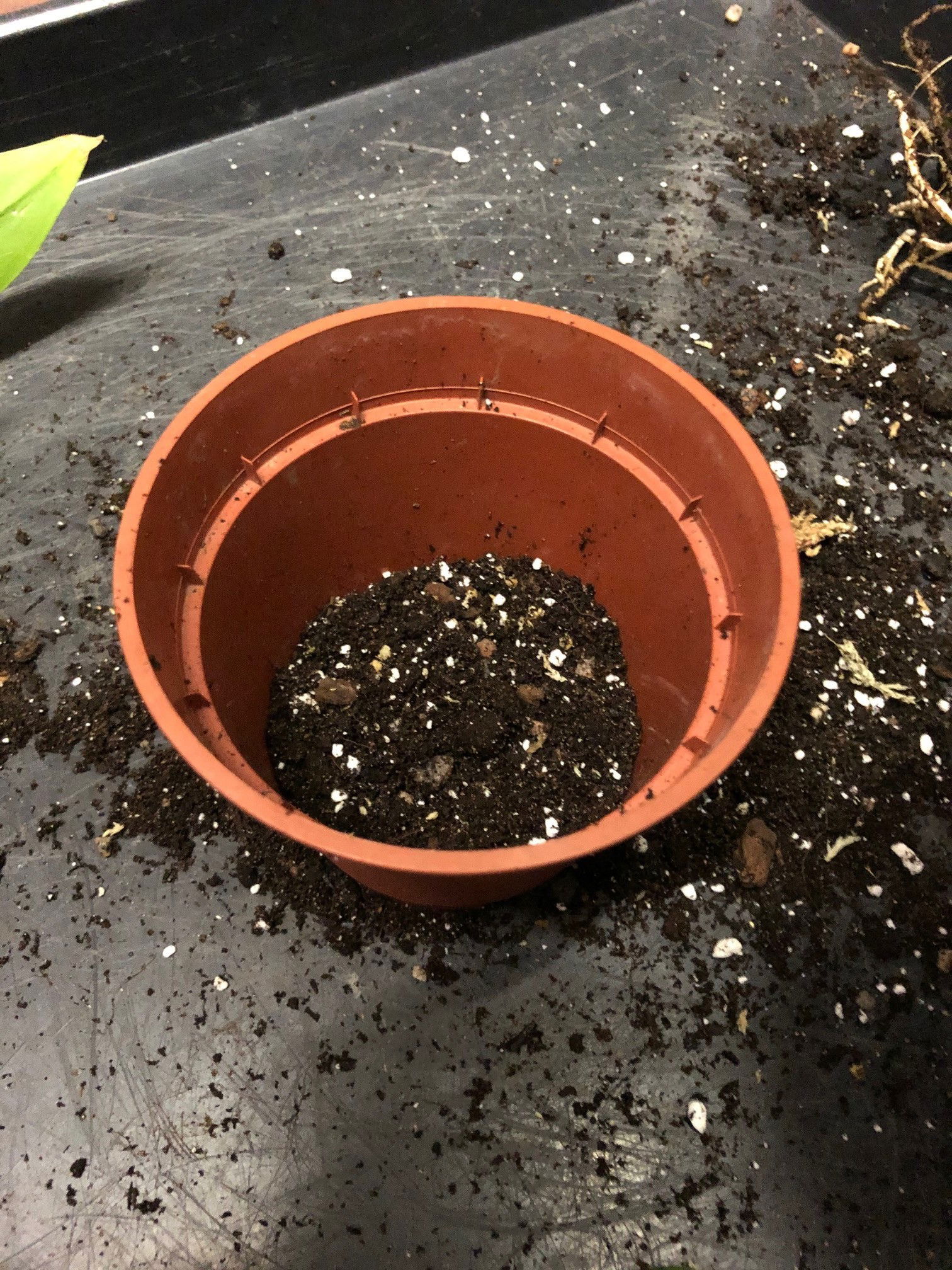
- Place the rootball into the pot and fill the soil around the edges. Ideally, you'd want the top ridge of the pot to remain above the soil line, as water may run-off when irrigated.
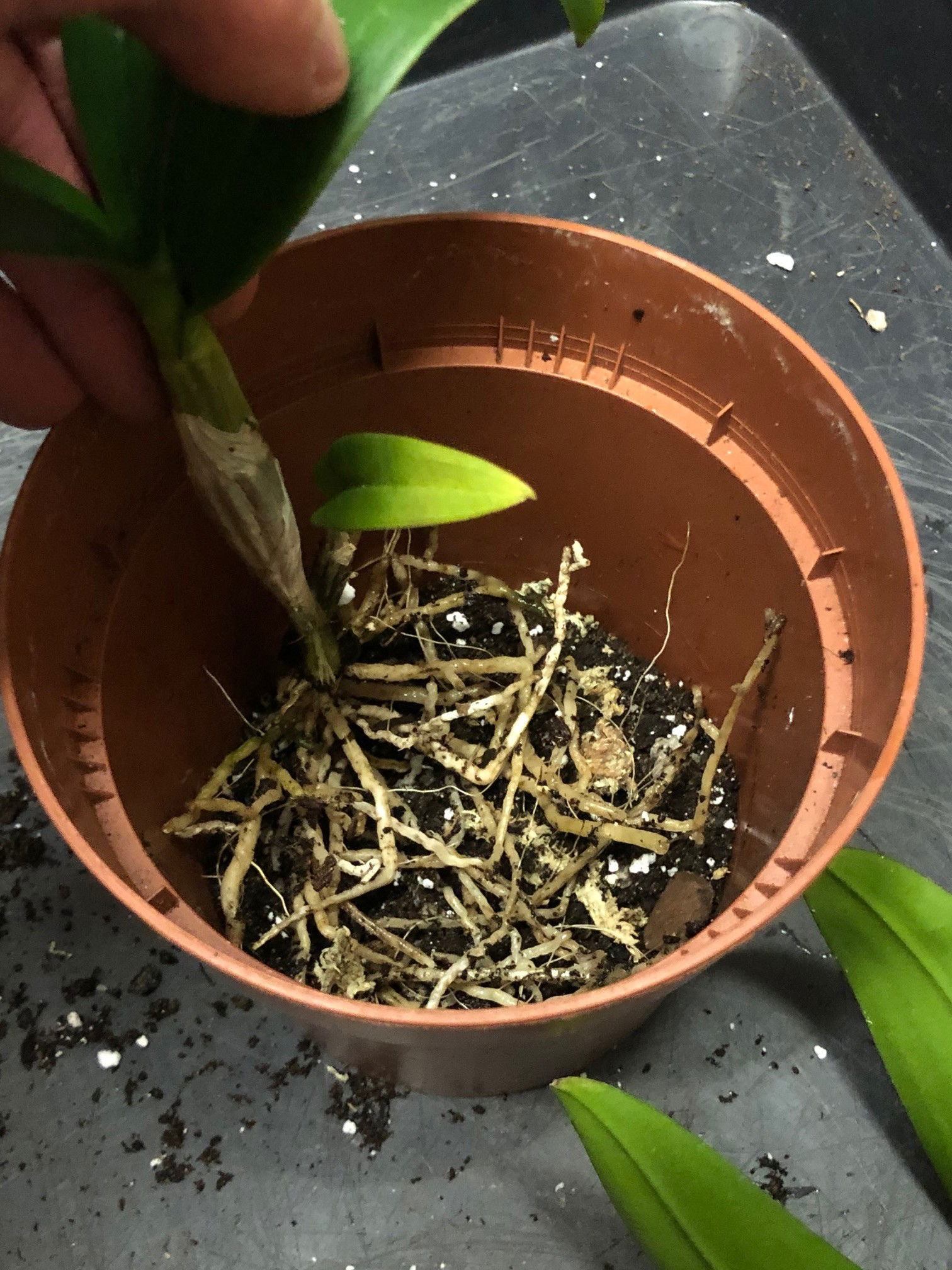
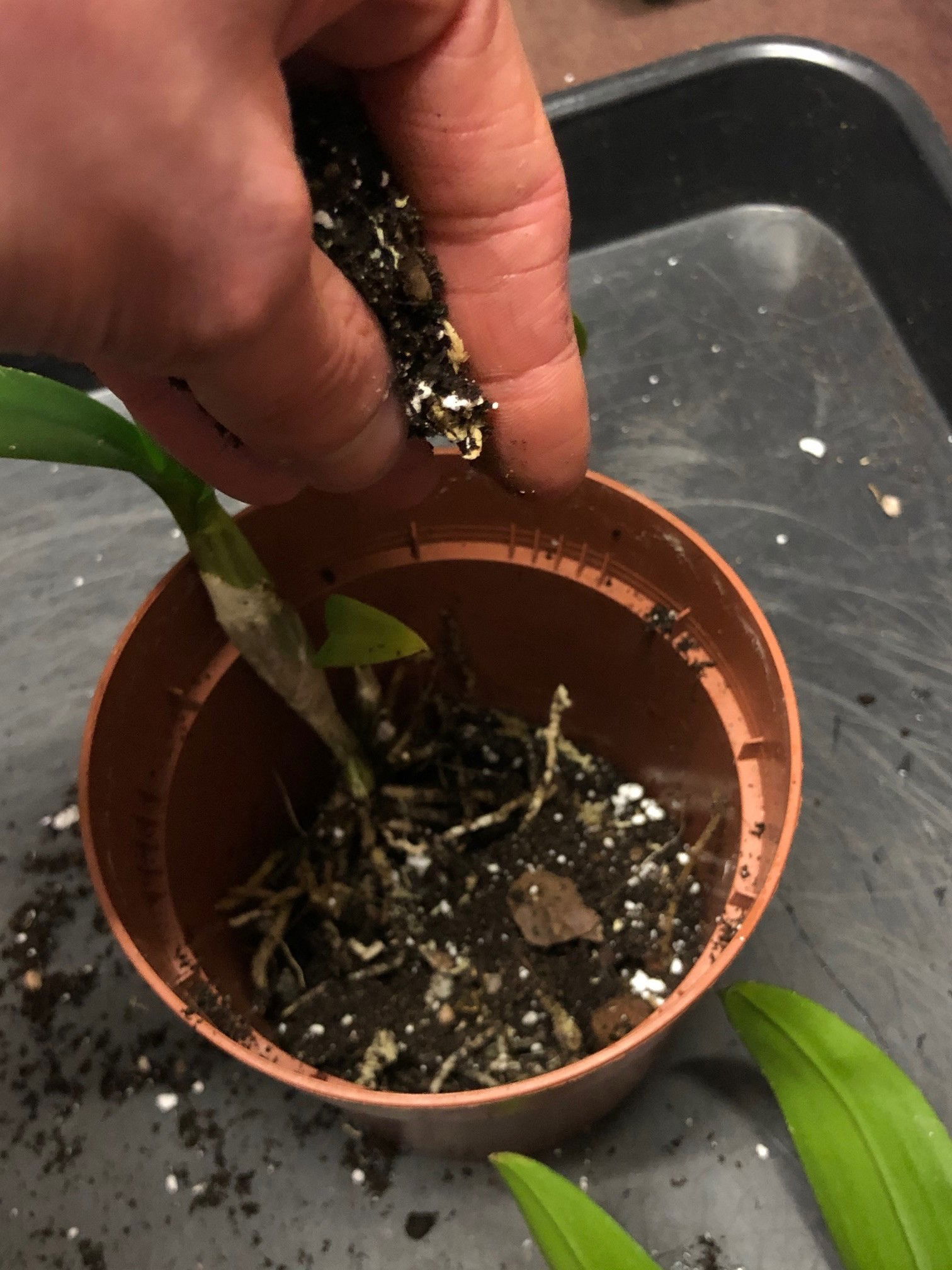
- NEVER pat the soil down. Although this can be done for outdoor plants, they'll have micro-organisms and animals (like worms) adding oxygen into the ground. Compacting the houseplant's soil will force the air to the surface when watered, causing the roots to break down and rot.

- Lightly bang the pot onto a small surface to allow the compost to fill the cubbyholes between the roots and soil.
- If the plant needs support, provide a stake, trellis or moss pole. After the first irrigation, the soil may condense in some areas, causing it to become uneven - fill the areas with some more compost to level it out again.
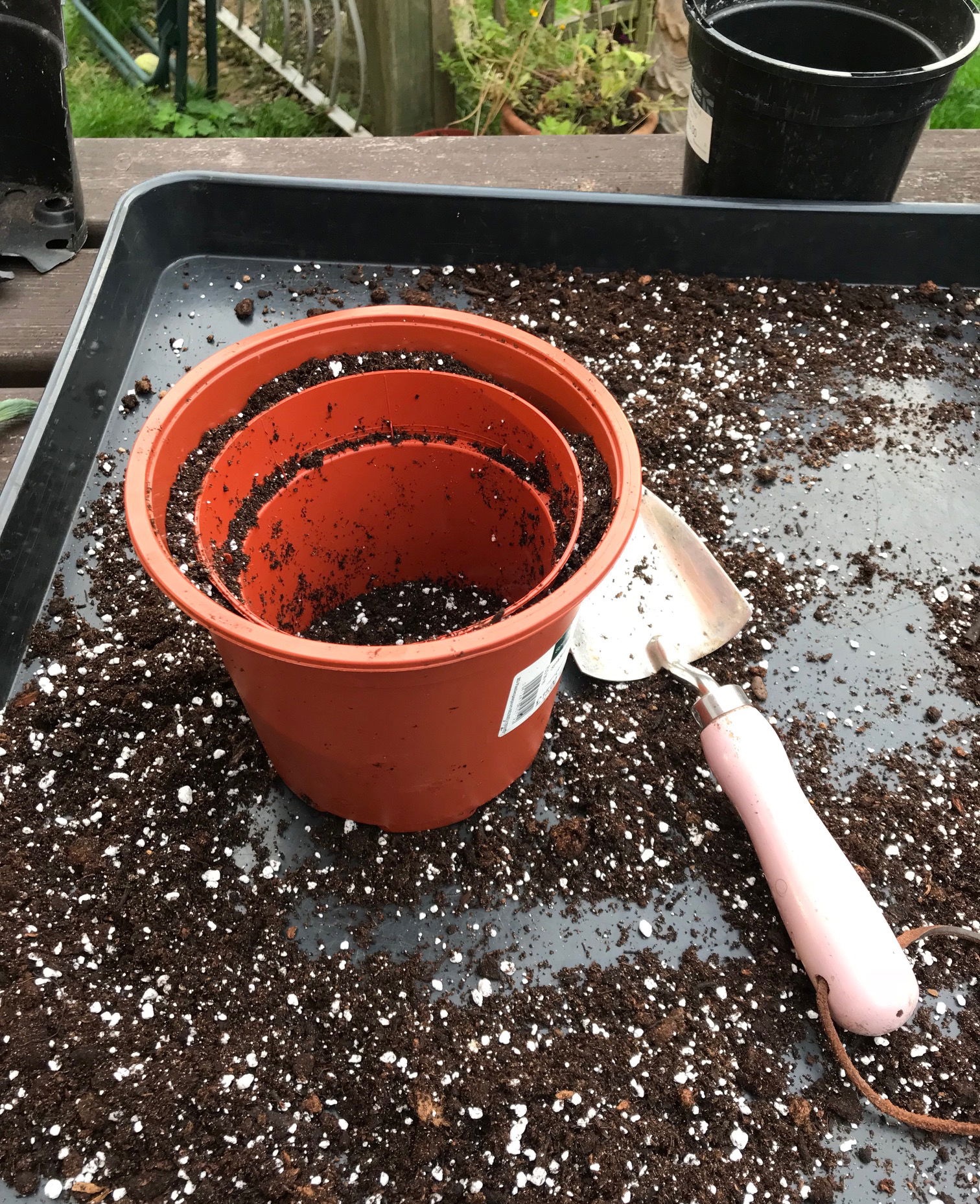 Placing the plant's original pot into the next one and filling the gaps with soil is an excellent way to transplant. Set the plant into the middle and fill the remaining edges with soil - it's really this easy!
Placing the plant's original pot into the next one and filling the gaps with soil is an excellent way to transplant. Set the plant into the middle and fill the remaining edges with soil - it's really this easy!
Further Tips to Consider
• For plants situated in dark locations, add some perlite to the lower portion of the new soil (which will be located in the bottom third of the pot surrounding the rootball). As the combination of over-watering and too little light go hand-in-hand, improving the soil's drainage will significantly reduce the chance of root rot.
Alternatively, for those that are placed in direct sunlight or high temperatures, improve its water-retention by adding coconut coir or bark. These ingredients will retain the moisture for longer, thus reducing the chance of dehydration.
• Create an indoor garden or display by bunching plants that have similar soil requirements (well-draining, ericaceous, carnivorous, etc.). If the display is successful, after a few months you'll have to water it more frequently - this is due to the ratio of soil-roots favouring the latter, which means your roots are healthy. Have a look at the image below to see ours that was created back in 2018!
 The species here are within the same 'Compost Category' that ukhouseplants have written to help you decide which plants are suitable within the same container.
The species here are within the same 'Compost Category' that ukhouseplants have written to help you decide which plants are suitable within the same container.
• For plants that grow predominantly in one direction, for example, a single-sided vine, move the rootball backwards to what would be the front of the pot (where the foliage sits). Phototropism will cause roots and foliage to grow towards the light, meaning that there will be more roots at the front of the pot, and less at the back. Placing the plant towards the back of the container will allow the roots to fill the whole pot and not just the well-lit-side.
• Finally, if you're thinking of repotting a vine that is growing up a moss pole, never remove attached aerial roots as the disturbance could put further stress on the plant. Extend by purchasing another same-sized pole and pushing directly into the hollow hole in the original's top - its moss-like material may have to be cut off from the top to access the hollow centre. Get a long, sturdy stick that has a similar length to the two poles combined and place in the two's centre to support the weight. Always perform the repot BEFORE adding another pole, as it'll prove more challenging due to the weight distribution and overall balance. N. B. - You'll only have to repot trailing vines every two or three years (except annually for Monstera) - if their pole needs extending, you can do this without the need for a transplant.
4. Symptoms of an Over-Potted Plant
When its time for a transplant, only use the next sized-up pot. This will minimalise the effects of excess moisture being retained in the soil for longer than necessary. Little or no roots in the new soil will result in the risk of developing root rot, with symptoms including a rotten stem, an abnormal amount of yellowing lower leaves, stunted growth and a weighty pot.
5. How to Avoid & Address Transplant Shock
Transplant shock is where the roots and their hairs have been over-moved or damaged, predominately during a repot. Avoiding this issue is easy - give the plant a good soak 24hrs before the action and NEVER tinker with the roots, unless you're dealing with root rot or splitting the crown via propagation. This 'soaking' period should occur whilst the plant is still in its original pot.
Symptoms are closely similar to dehydration - wilting, stunted growth and the yellowing of leaves are all typical signs of a stressed plant.
For a better comprehensive, ukhouseplants have categorised transplant shock into two tiers - mild and severe. Note that if your plant is wilting has rapid lower leaf loss while being sat in overly moist-soil, root rot may be to blame.
Mild - Slowed growth, a slight greying or yellowing of foliage and flower loss are all signs of mild transplant shock. Keep on top of watering, humidity levels and always provide a location with a generous amount of indirect light. Do not unearth the roots again as this will only add to its misery. Although the already-yellowed leaves will be a permanent fixture, new growth will soon take over once the plant regains its strength. If the foliage continues to wilt, do not fall in the trap of over-watering. Remember that the roots are damaged and NOT dehydrated - keep the soil evenly moist, allowing the top third of the pot to become dry in between waters. To find out more about when to hydrate a plant, type its name on the 'Q' (search) symbol on the top-banner!
Severe - The continuation of wilting, yellow or greying of foliage and stunted growth that are still prominent after a few weeks are all symptoms of severe transplant shock. As the chance or survival is minimal, there are two options. You can either wait for new growth or consider propagation if the plant continues to decline. Woody plants like Dracaena, Ficus, Schefflera & Yucca can all be propagated via stem cuttings, whereas others are separated by 'pup' or offsets. If the plant loses all of its leaves, survival will be highly unlikely, so the only sane option is to discard.
6. Choosing the Correct Potting Mix for Your Plant
Before we start, our online shop is now open for business. Here, you'll get free delivery off all items, including composts, repotting kits, fertilisers and more! Click here to view!
Houseplant Soil
Most plants will thrive in Houseplant soil; however, as it 's slightly water-retentive, Succulents will benefit more from a 'Cacti' based compost. Most plants can also be put in a well-stored sack of multipurpose compost - add a splash of grit, perlite or sand to the mix. For those that are situated in a dark location, try adding some perlite into the potting mix - this will alleviate the chance of root rot by aerating the soil profile.
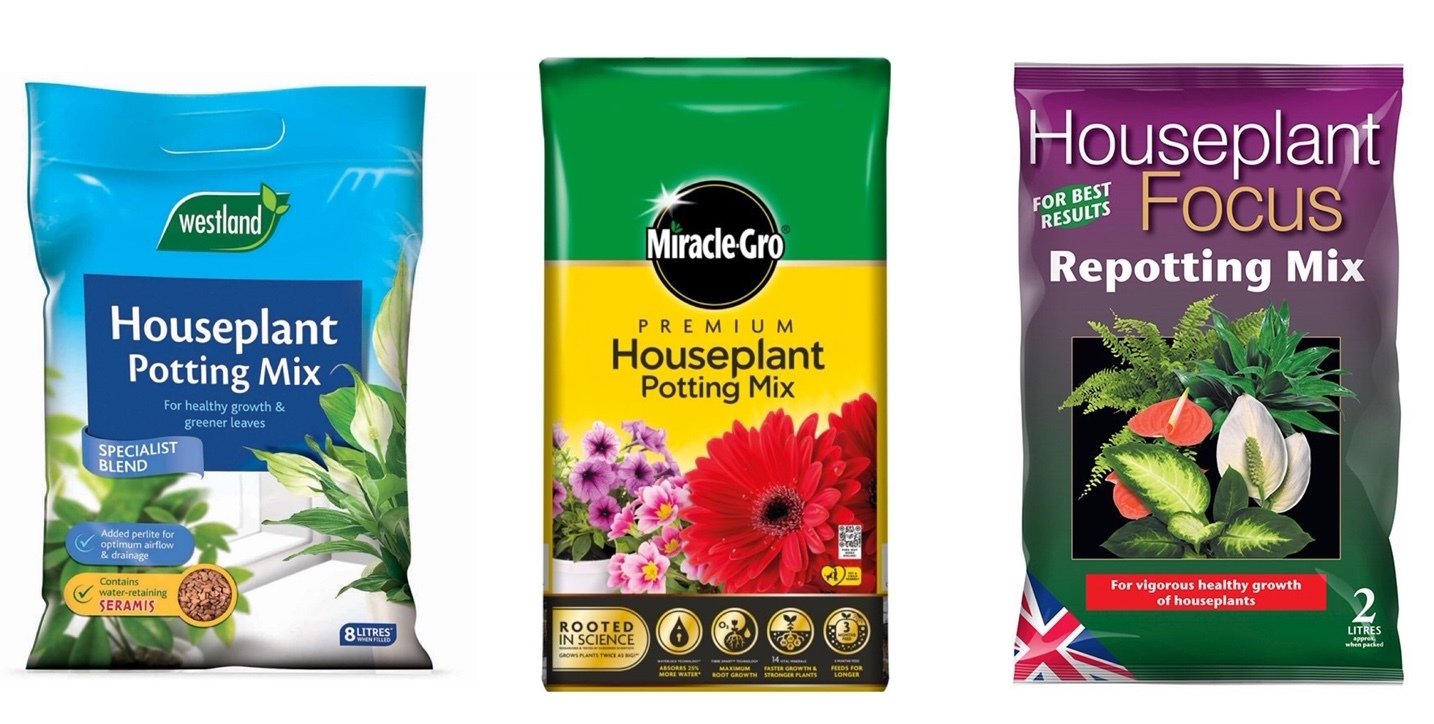
Bonsai Compost
Although Bonsai will generally grow better in this type of soil, they can still be placed in houseplant soil if wholly necessary.
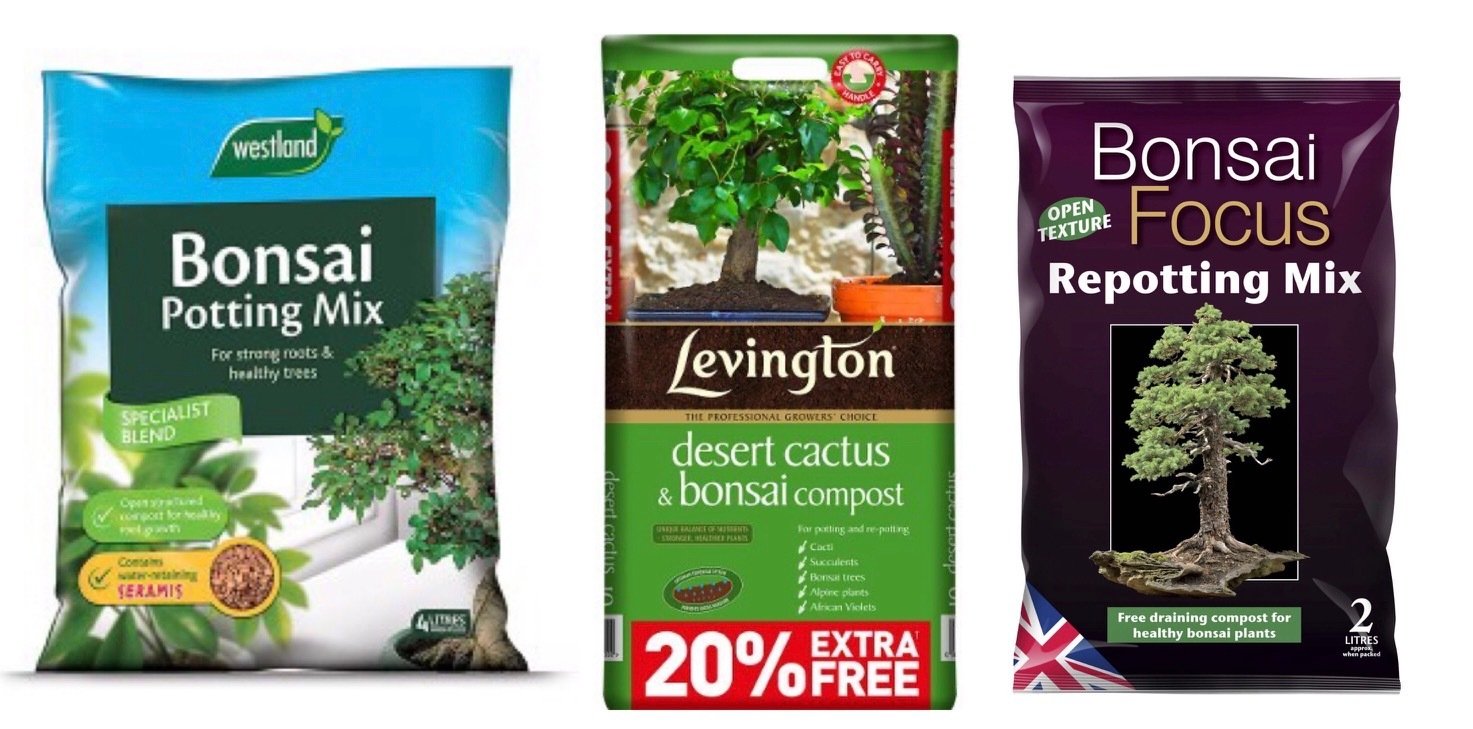
Citrus Soil
Ornamental Citrus & Orange Trees. Specimens that fall into this category may be placed in houseplant soil if wholly necessary, too.
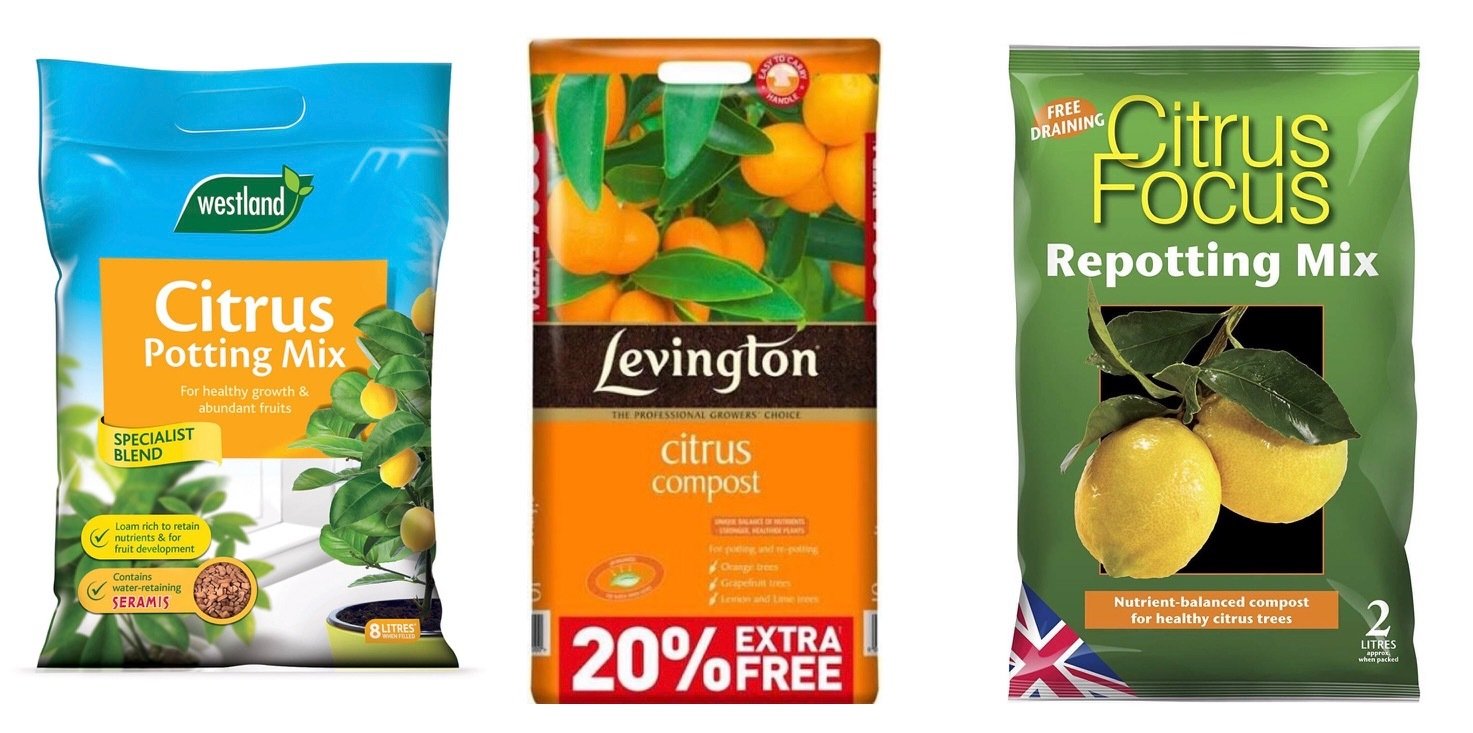
Cactus & Succulent Soil
Desert & Tropical/Epiphytic Cacti & Succulents. Ledebouria, Sansevieria & ZZ Plants should also be situated in this type of soil due to the high risk of root rot when placed in a traditional potting mix. If you can't obtain this succulent-specific compost, buy a bag of houseplant soil and introduce some grit, perlite and sand to the mix for additional drainage.

Orchid Bark / Compost
Moth Orchids (Phalaenopsis) will require just Orchid bark. In contrast, other members of this family, like Dendrobiums, Cambria, Cymbidiums, Epidendrums, Slipper Orchids (& Anthuriums) will respond better to a mixture of this and some houseplant compost. Aim for 1 part Orchid bark & 2 parts houseplant soil for best results.
N. B. - Jewel Orchids (Ludisia discolor) is the only species in the Orchid family to break this trend, as they'll require just houseplant soil.
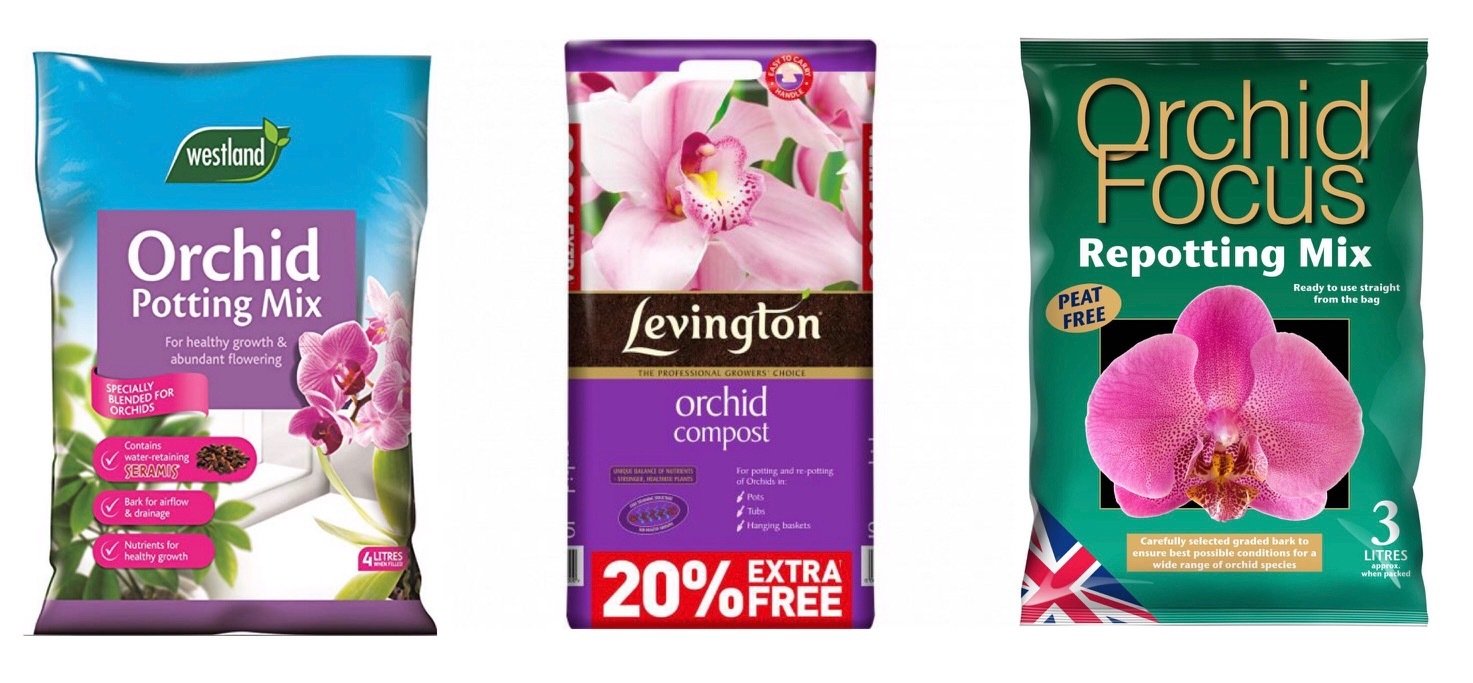
Carnivorous Soil
Carnivorous plants must be placed in a specific Carnivorous-labelled as they naturally grow in nutrient-deficient bogs/soil. Situating an insect-eating plant in any other compost will result in yellowed foliage and inevitable death after a few days. There are no substitutes for carnivorous soil.
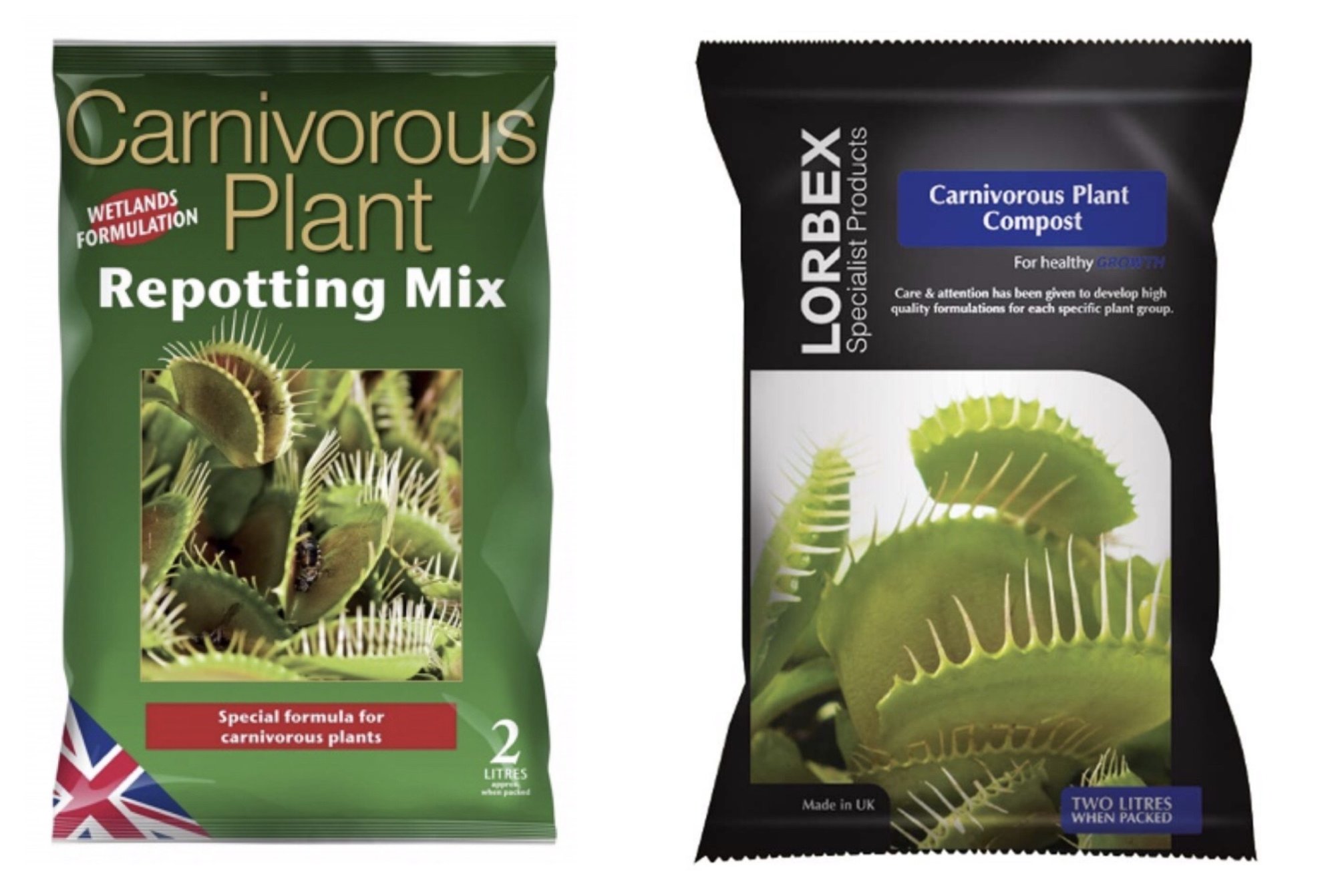
Book a 1-to-1 Consultation with THE HOUSEPLANT DOCTOR™
Need advice about repotting your plant? Book a video or message consultation with expert Joe Bagley, THE HOUSEPLANT DOCTOR™ (author or ukhouseplants.com). Choose between a ten or thirty-minute session & a platform of your choice (WhatsApp, FaceTime, Facebook Messenger or Zoom). Ask unlimited questions in one session, including queries on your dying/challenging plants, pests eradication, terrariums, repotting advice & everything in between! Available worldwide.
